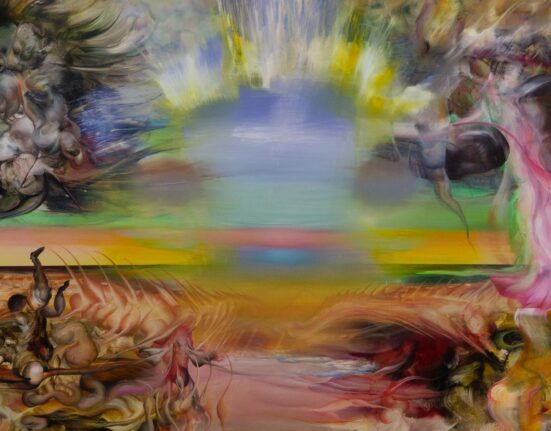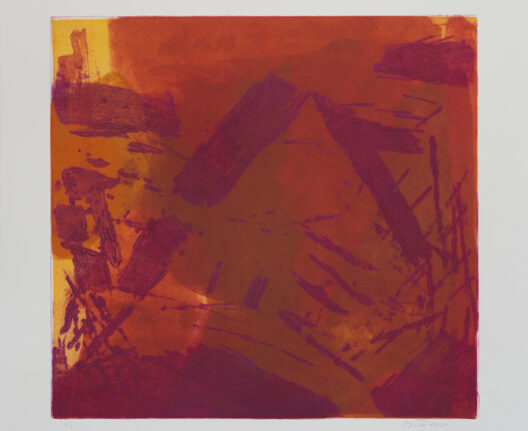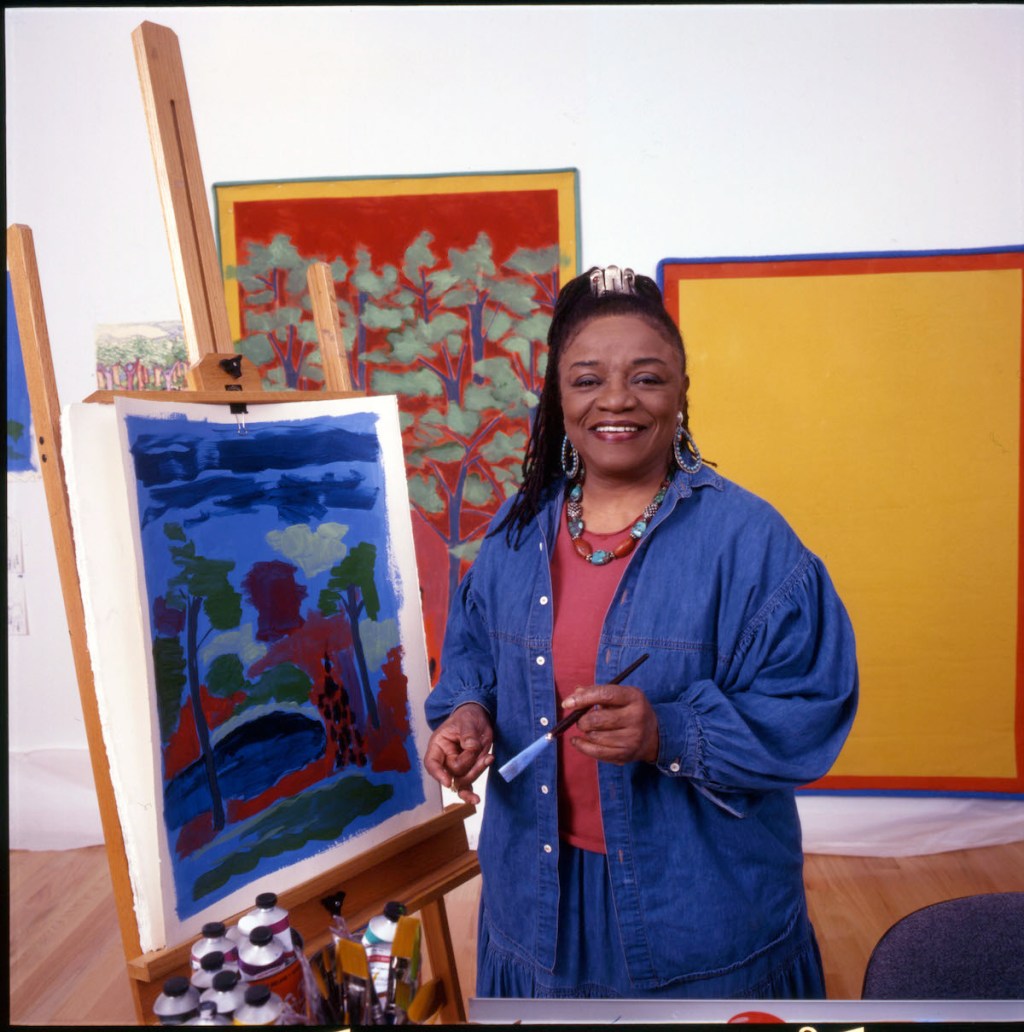
Photo Anthony Barboza/Getty Images
Artist Faith Ringgold, whose seven-decade career encompassed bestselling children’s books, incisive activism, and work in an astonishing array of mediums, and culminated with the kind of mass international acclaim that was long denied to Black visual artists and women artists like her, died on Saturday at her home in Englewood, New Jersey. She was 93.
Her death was announced by her longtime New York representative, ACA Galleries, which did not specify a cause.
Just one aspect of Ringgold’s remarkable life would have been enough to secure her place in history, but it was her action-packed, richly detailed painted quilts for which she was best known. Her most famous was Tar Beach (1988), which tells the story of an 8-year-old girl, Cassie Louise Lightfoot, who flies from the roof of her Manhattan apartment building into the night sky. In 1991, it was adapted into a children’s book that has become a staple of elementary school classrooms in the United States.
Ringgold made fabric part of her practice after seeing Tibetan thangkas at the Rijksmuseum in Amsterdam, but quilting had deep roots in her family. Her great-great-great-grandmother, who was enslaved in the South, quilted, she said. Her mother, Willie Posey Jones, a fashion designer, helped her sew early on, and Ringgold would go on to use the process to chart her travels, her love of art history, the horrors of the Middle Passage, and a great deal more.
With mordant humor and a joyful flare for invention, Ringgold also made vivid dolls and unforgettable political posters, staged performances, and wrote. We Flew Over the Bridge: The Memoirs of Faith Ringgold was published in 1995.
She was an organizer, too, picketing outside museums that that excluded Black and women artists and defending free speech. On at least one occasion, she was arrested. Recalling the 1960s and ‘70s, in an interview with ARTnews in 2016, Ringgold said, “People were really very dedicated to each other, to their freedom and support of one another. And I felt that I had something to say, and I wanted to say it.”
Faith Ringgold was born on October 8, 1930, in New York and grew up in Harlem. Her father, Andrew Louis Jones, was a truck driver. She enrolled at City College in Manhattan in the 1940s, and while she was barred from majoring in art as a woman, she was determined to become an artist, and so she took classes by studying art education. After graduating, Ringgold taught art in New York public schools, quitting in the 1970s to focus on her art. (She later taught for years at the University of California, San Diego.)
From the start, Ringgold’s work examined race relations and politics in America with an unflinching gaze. For Members Only (1963), from her “American People” series, has stone-faced white men staring from it. A 1967 painting from her “Black Light” series spells out “Die N—” within the stripes of the American flag. The 1970s brought her “Slave Rape” works, which follow women as they attempt to escape enslavement. (They are on unstretched canvas; one of many aspects that she liked about using such textiles was that she could transport them herself.)
Ringgold’s vast body of work amounts to an epic, sustained history of Black life in America across centuries, and offers a window into her own experience as an artist amid fast-changing times. In just one especially charismatic piece, she has an octet of fellow pioneering Black women (Sojourner Truth, Harriet Tubman, and Fannie Lou Hamer among them) holding a sunflower-covered quilt in a sunflower-filled field in Arles, France, as the area’s most famous resident, Vincent van Gogh, stands off to the side.
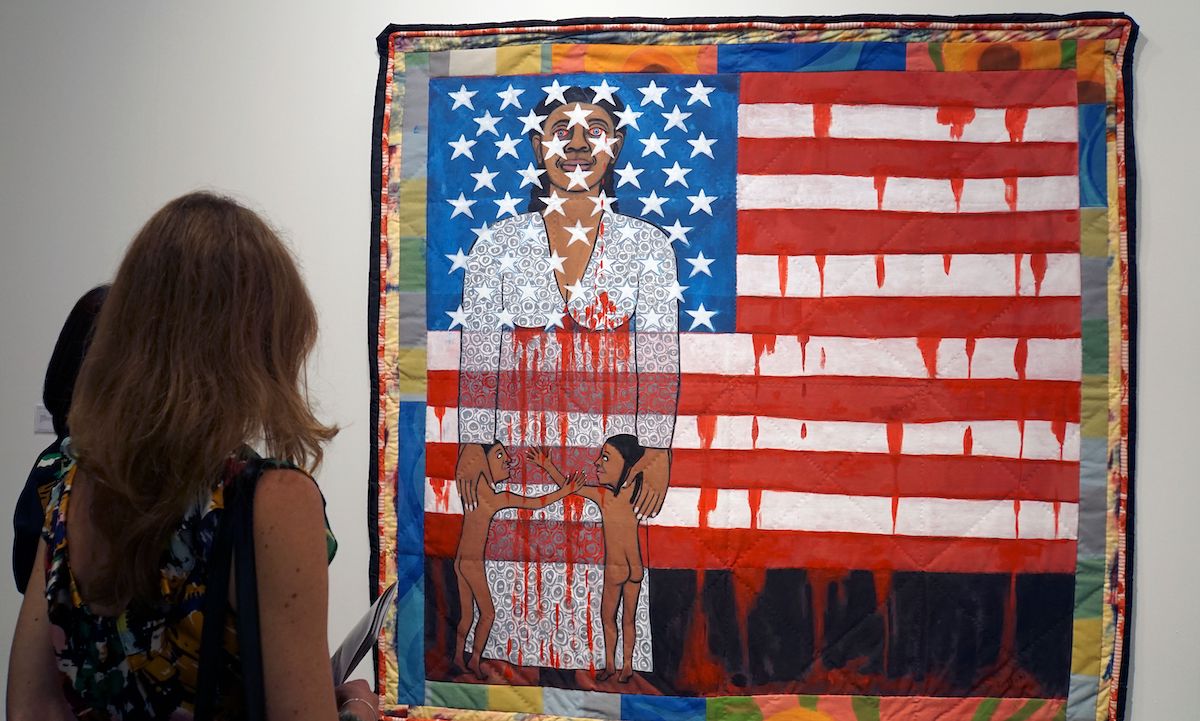
Faith Ringgold, The Flag is Bleeding #2, 1997.
Photo Leila Macor/AFP via Getty Images
Ringgold showed steadily throughout her career, and found supportive collectors, but major museums only came aboard fully in the late 2010s and 2020s, as they attempted to reckon with their history of racism and sexism. “I am fully aware of the attention I am now getting in the art world, and grateful,” the artist said to the Times in 2019. “But I am also aware that it has taken a very long time, for I had to live to be 89 years old to see it happen.”
In 2019, the Serpentine Galleries in London organized an acclaimed survey of her work, which traveled to the Bildmuseet in Umea, Sweden. Another retrospective also appeared at the Glenstone Museum in Potomac, Maryland, and the New Museum in New York.
A few years earlier, the Museum of Modern Art had acquired her 12-foot-wide Die (1967), which shows a bloody street fight between Black and white people. When MoMA reopened in 2019 after renovations, it hung next to the storied Les Demoiselles d’Avignon (1907) of Pablo Picasso, whom she often cited as an inspiration.
Ringgold’s art is also in the Philadelphia Museum of Art, the Guggenheim Museum, the Whitney Museum (an institution she had picketed), and numerous other important institutions. She was the author of more than 16 children’s books, and received more than 20 honorary doctorates. Always ready to try something new, she even developed an app, Quiltuduko, a sudoku-style puzzle game that involves arranging patterns and images.
The artist’s first marriage, to Robert Earl Wallace, a jazz pianist, ended in divorce; in 1962, she married, Burdette “Birdie” Ringgold, an auto worker, who died in 2020. The artist’s survivors include her two daughters, the cultural critic Michele Wallace and Barbara Wallace.
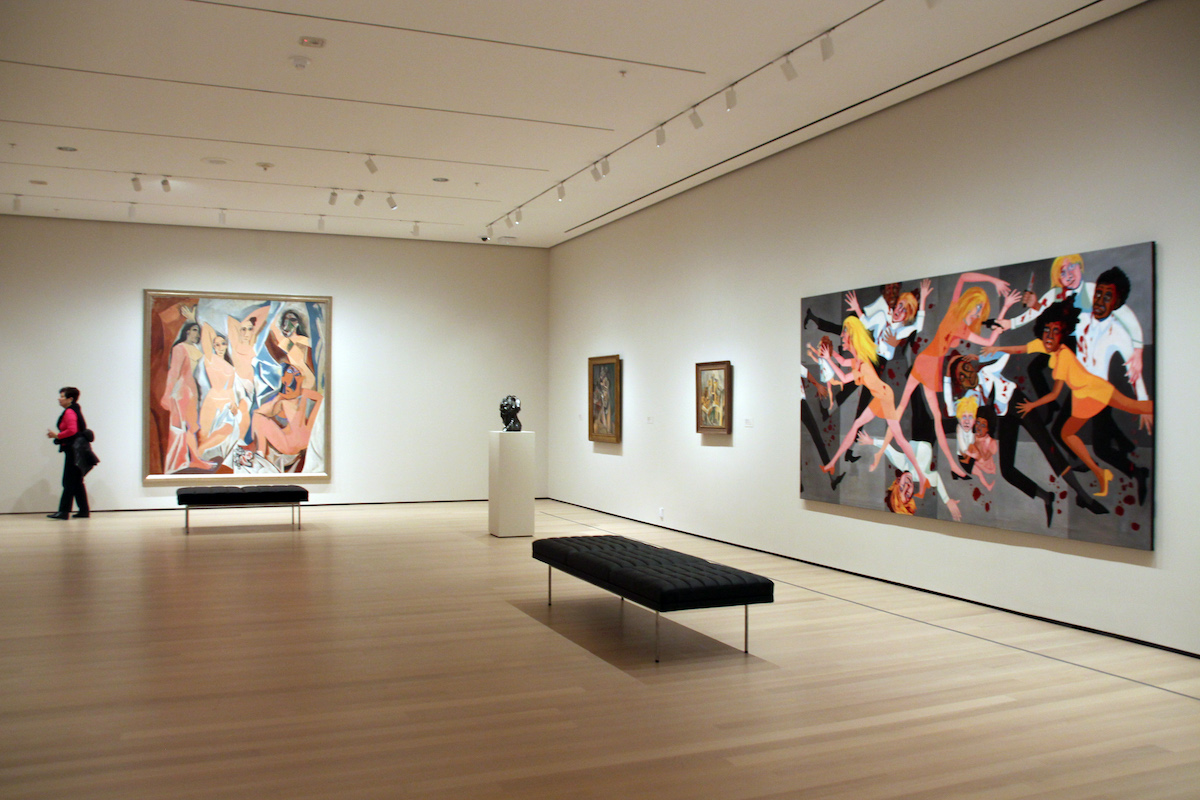
In the 2019 rehang of the Museum of Modern Art, Pablo Picasso’s Les Demoiselles d’Avignon and Faith Ringgold’s American People Series #20: Die appeared beside each other.
Photo Christina Horsten/dpa/picture alliance via Getty Images
Even though Ringgold lived to see some segments of the art world embrace artists from more diverse backgrounds, she continued to speak forthrightly about the underrepresentation of Black women artists, telling the Times in 2019 that “there is a bias even in the selection of black women, favoring those who have little or no politics.”
That, of course, could not describe Ringgold. She was resolute in her convictions, ready to take a stand, and aware of the risks that entailed. In 1970, she took part in an exhibition called “The People’s Flag Show” at Judson Memorial Church in Greenwich Village, which aimed to challenge flag desecration laws, following the conviction of an art dealer a couple years earlier for showing anti-Vietnam War work that involved the flag. The police showed up, and cuffed Ringgold and two other artists, Jean Toche and Jon Hendricks. Speaking with ARTnews in 2016, she explained her thoughts on the matter. “How dare you tell artists what they can do?” she said. “That’s the beginning of some really bad funk—bad, bad, bad.”


